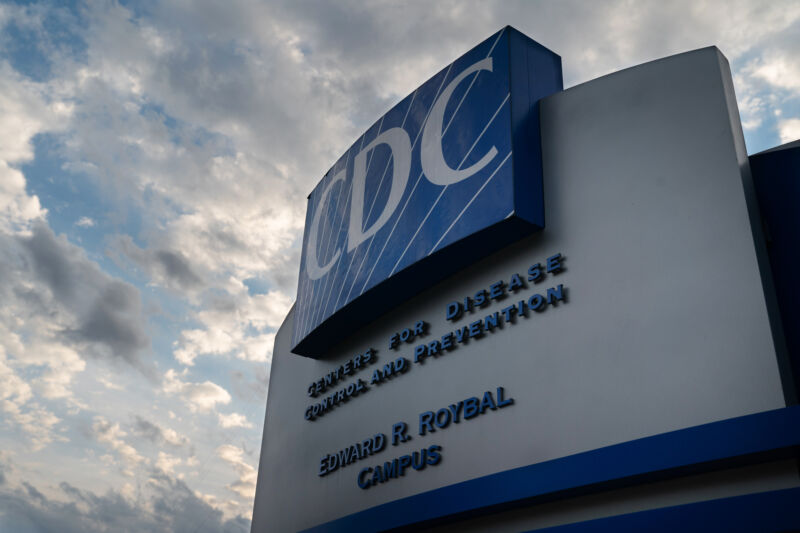Puzzling cases of hepatitis in kids leaps to 109 in 25 states, CDC reports

The Centers for Disease Control and Prevention is now investigating 109 cases of unexplained liver inflammation—hepatitis—in young children from 25 states over the past seven months. Of the 109 affected children, five have died, and 15 (14 percent) required liver transplants. The children were all under the age of 10, and 90 percent were hospitalized.
The CDC’s announcement Friday marks a dramatic uptick in the US’s reported cases, which was limited to nine confirmed cases in Alabama just three weeks ago. The cases also add to a mounting global tally, which reached upward of 300 cases from more than two dozen countries.
But, despite the boom in cases, CDC and international health investigators are still puzzled about the cause of the illnesses. Severe hepatitis is rare in young children, and unexplained cases of severe hepatitis are rarer.
So far, no common exposures, travel, medications, foods, or beverages have linked the cases together. The CDC and other health agencies have ruled out viruses known to cause hepatitis in children, such as hepatitis viruses A through E.
They’ve also ruled out COVID-19 vaccination as a possible cause, as most of the children have not been vaccinated—most are currently ineligible for vaccination due to their age. “COVID-19 vaccination is not the cause of these illnesses and we hope that this information helps clarify some of the speculation circulating online,” Jay Butler, deputy director for Infectious Diseases at the CDC, said in a press briefing Friday.
The CDC previously also ruled out SARS-CoV-2 as the cause, noting that the first known cases in Alabama all tested negative for the pandemic virus. Those nine cases also had no history of a SARS-CoV-2 infection. However, in the press briefing Friday, Butler noted that the agency is looking into antibody testing of affected children to determine if some have been previously infected with SARS-CoV-2, in case that could be playing a role.
The UK Health Security Agency (UKHSA) and others have suggested that the hepatitis cases could be linked to prior SARS-CoV-2 infection with an additional factor triggering hepatitis later.
Adenovirus link
But, the leading hypothesis continues to be that an adenovirus contributes to the cases somehow. Of the 109 cases reported by the CDC, Butler said that more than half of them have tested positive for an adenovirus. Of the five Alabama cases given subtype testing, all five tested positive for adenovirus type 41.
In a UKHSA technical briefing also released Friday, the agency reported that the UK case count had risen to 163. Of 126 cases that have been tested for adenovirus, 91 (72 percent) have tested positive. And of 18 cases that were successfully subtyped, 18 were positive for adenovirus type 41.
Adenoviruses are a large family of common viruses, most often linked to mild respiratory illnesses and pink eye in children. Adenovirus type 41, however, is a subtype that typically presents as a gastrointestinal illness. Adenoviruses overall are occasionally linked to hepatitis cases, but those cases are almost exclusively in immunocompromised children. Most of the cases of unexplained hepatitis have occurred in previously healthy children.
In the UKHSA’s technical briefing Friday, the agency listed its updated working hypotheses.
“There are increased pediatric acute non-A-E hepatitis presentations due to:
- A normal adenovirus infection, due to one of [the possibilities below]:
a. Abnormal susceptibility or host response which allows adenovirus infection to progress more frequently to hepatitis (whether direct or immunopathological), for example from lack of exposure during the coronavirus (COVID-19) pandemic.
b. An exceptionally large wave of normal adenovirus infections, causing a very rare or under-recognized complication to present more frequently.
c. Abnormal susceptibility or host response to adenovirus due to priming by a prior infection with SARS-CoV-2 (including Omicron restricted) or another infection.
d. Abnormal susceptibility or host response to adenovirus due to a coinfection with SARS-CoV-2 or another infection.
e. Abnormal susceptibility or host response to adenovirus due to a toxin, drug, or environmental exposure. - A novel variant adenovirus, with or without a contribution from a cofactor as listed above.
- A post-infectious SARS-CoV-2 syndrome (including an Omicron restricted effect).
- A drug, toxin, or environmental exposure.
- A novel pathogen either acting alone or as a coinfection.
- A new variant of SARS-CoV-2.”
https://arstechnica.com/?p=1852878